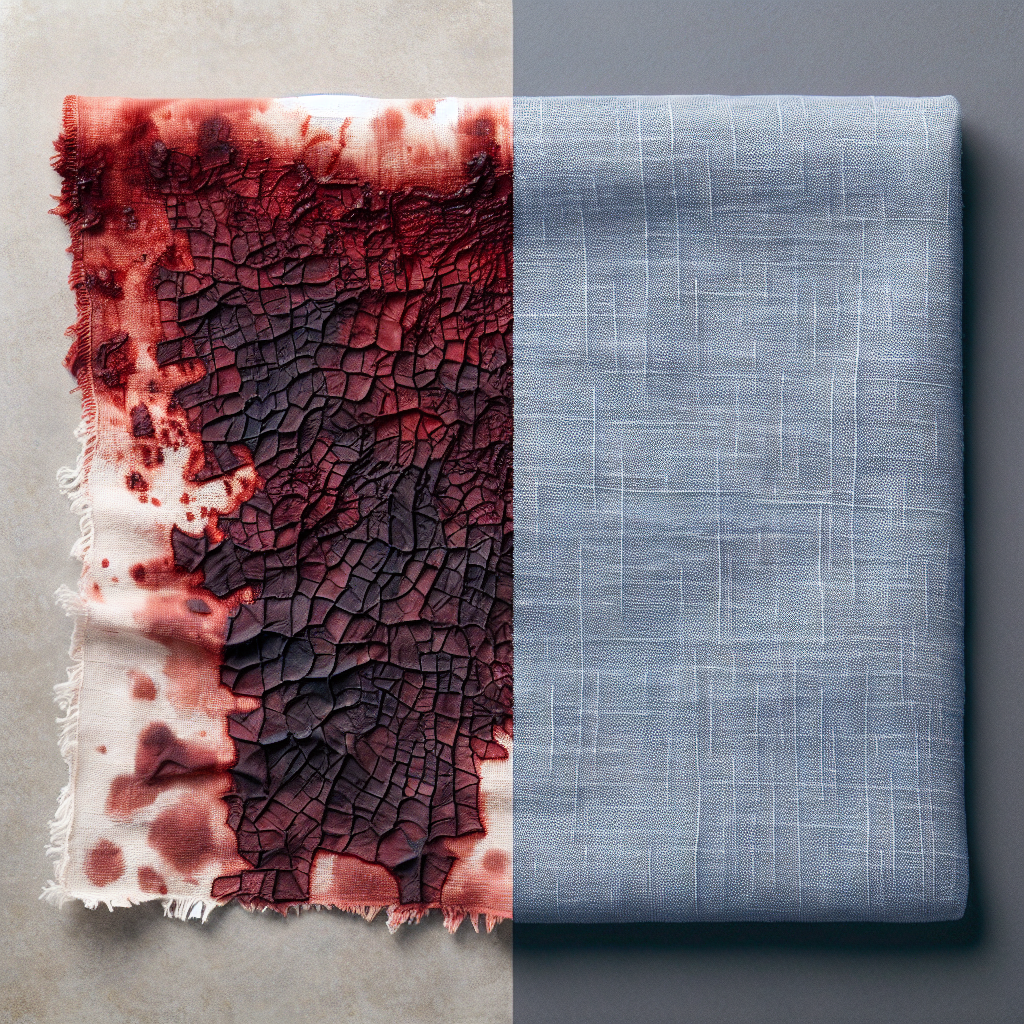
How to Remove Dried Blood Stains: A Complete Guide to Restoring Your Fabrics
Blood stains are one of the most stubborn types of stains to deal with, especially when they’ve dried. Whether it’s from a cut, nosebleed, or an unexpected spill, dried blood can leave behind unsightly marks on clothing, bedding, upholstery, or even carpets. While it may seem like a permanent problem, don’t panic—there are effective ways to remove dried blood stains without damaging your fabrics.
In this post, we’ll guide you through how to remove dried blood stains using simple, accessible methods. From using cold water to special cleaning agents, we’ll explore different techniques so you can tackle this common household problem with confidence with the help of HCS Cleaning Services.
Why Dried Blood Stains Are So Tough to Remove
Dried blood stains are notoriously tough because blood contains proteins, which bond with the fibers in fabrics. As blood dries, it becomes harder to break down, making removal more difficult. However, the faster you act, the better your chances of successfully removing the stain.
While fresh blood stains are easier to tackle, dried blood stains require more persistence. The good news is that with the right techniques, you can successfully restore your fabrics to their original condition.
Step-by-Step Guide on How to Remove Dried Blood Stains
1. Act Fast – If the Stain is Recent
While we’re focusing on dried blood stains, it’s essential to note that fresh blood stains are far easier to treat. If the stain is still fresh, you can use cold water alone to remove the stain quickly. Simply soak the fabric in cold water for about 30 minutes, then gently blot with a clean cloth.
However, if the stain is already dried, you’ll need a few more tools.
2. Soak the Fabric in Cold Water
When dealing with dried blood stains, always use cold water. Hot water can set the stain by binding the proteins in the blood to the fabric, making the stain even harder to remove.
- Start by soaking the stained fabric in a basin or bucket of cold water. Let it sit for 30 minutes to an hour, depending on how long the blood has been dried.
- For stubborn stains, gently scrub the area with a soft-bristled brush or your hands to loosen the dried blood.
3. Use Soap or Dishwashing Liquid
Dish soap or gentle laundry detergent can be an effective way to treat dried blood stains. Both options break down the proteins in the blood, making the stain easier to remove.
- Apply a small amount of mild dish soap or laundry detergent directly onto the stain.
- Gently rub the fabric together to work the soap into the fibers.
- Allow the soap to sit for 10-15 minutes before rinsing with cold water.
- Repeat the process if necessary.
4. Try Hydrogen Peroxide for Stubborn Stains
Hydrogen peroxide is a powerful and commonly used stain remover. It can be particularly effective at removing dried blood stains because it works as a mild bleaching agent, helping to break down the proteins in the blood.
- Test the hydrogen peroxide on an inconspicuous area first to make sure it doesn’t damage the fabric.
- Apply 3% hydrogen peroxide directly onto the stain and let it bubble up for a few minutes. This bubbling action can help lift the stain.
- Gently blot the area with a clean cloth, and then rinse with cold water.
- Repeat as necessary for tough stains.
5. Baking Soda Paste for Tough Stains
Baking soda is another helpful household product when it comes to removing dried blood stains. It’s gentle on fabrics but has abrasive properties that can work wonders on stubborn stains.
- Make a paste by mixing baking soda with a little water.
- Apply the paste directly to the stain, then gently scrub with a soft-bristled brush or a cloth.
- Let it sit for 15-30 minutes before rinsing with cold water.
6. Enzyme Cleaner for Protein-Based Stains
Enzyme cleaners are designed to break down protein-based stains like blood. These cleaners contain natural enzymes that target and dissolve blood, making them one of the best options for removing dried blood stains.
- Follow the manufacturer’s instructions on the enzyme cleaner.
- Typically, you’ll apply the cleaner directly onto the stain, let it sit for 15-30 minutes, and then rinse with cold water.
- This option is especially useful for delicate fabrics that may not react well to harsher chemicals.
7. For Carpet and Upholstery – Use a Vinegar and Water Solution
Blood stains on carpets or upholstery require a slightly different approach than clothing. One effective solution is a mixture of vinegar and water, which can help lift the stain from the fibers without causing damage.
- Mix one part white vinegar with two parts cold water in a spray bottle.
- Lightly spray the solution onto the stained area.
- Let it sit for 5-10 minutes, then blot gently with a clean cloth.
- Repeat the process until the stain is gone.
8. Rinse, Dry, and Repeat if Necessary
Once you’ve applied your chosen cleaning method, rinse the fabric thoroughly with cold water. It’s essential to make sure the blood is completely gone before drying the fabric, as heat can set any remaining stain.
- For fabrics that can be machine washed, launder them as usual after treatment.
- For delicate or hand-wash-only fabrics, gently rinse and blot the fabric until the stain is fully removed.
- Repeat any of the cleaning processes if the stain is still visible after the first treatment.
Preventing Dried Blood Stains in the Future
While accidents are inevitable, preventing dried blood stains in the future is easier than you might think:
- Tend to cuts or injuries immediately by rinsing with cold water and applying pressure to stop bleeding.
- Keep stain removers on hand for quick action, especially in the event of minor injuries or spills.
- Always treat fresh stains promptly to avoid the hassle of removing dried blood stains later.
Conclusion: Restoring Your Fabrics to Their Former Glory
Whether it’s on your clothes, sheets, or upholstery, dried blood stains don’t have to be permanent. With the right tools and techniques, you can successfully remove the stain and restore your fabrics to their original condition. From using hydrogen peroxide to baking soda or enzyme cleaners, there are a variety of ways to tackle this challenging stain.
Remember to always start by soaking the fabric in cold water and test any cleaner on an inconspicuous area before applying it directly to the stain. If you follow these steps and act quickly, you’ll be well on your way to a stain-free home!
